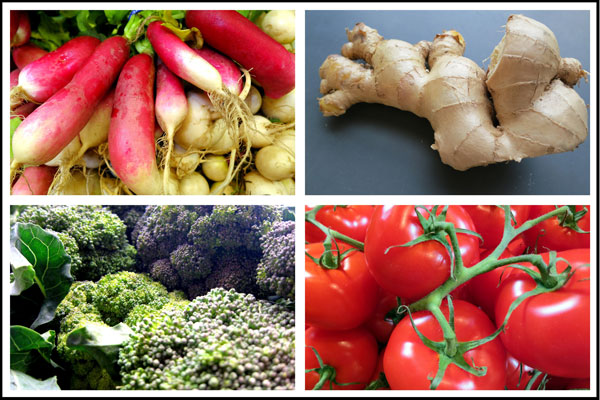Cooling Foods for Summer Eating
Note: This article is not meant as a substitute for proper medical advice. Please consult with your medical practitioner before using any type of remedy, herbal or otherwise.

By Robert Luby, MD
In western cultures, when we think of the energy contained in a food, we tend to think quantitatively and consider how many calories it contains. However, in traditional Chinese medicine and other ancient medical practices, the energy in a food is also considered from a qualitative perspective.
Instinctually we know that some foods are more appealing in summer, others in winter. In many forms of traditional medicine, this is explained by the ‘warming’ and ‘cooling’ properties of foods. A food may be either warming or cooling regardless of whether it is high or low in calories, carbohydrate, protein, or fat.
The concept of ‘warming’ and ‘cooling’ foods also applies to many health conditions. In modern western medicine, we do not consider health conditions to have ‘heat patterns’ or ‘cold patterns,’ but these are important considerations in the diagnosis and treatment of health conditions in other medical models. Accordingly, warming and cooling foods may be prescribed therapeutically during any season of the year. However, the manner in which warming and cooling foods are used to treat health conditions is beyond the scope of this article. One should consult a trained practitioner for appropriate advice. In this article, we will consider foods and food preparation techniques which are appropriate for summer because of their cooling properties.
We all recognize that salads are much more appealing in July than in January. This instinct is in agreement with the principle that most raw foods tend to be more cooling than cooked foods. This principle becomes more nuanced when you consider that foods that take the shortest time to grow tend to be the most cooling. This would include lettuce, celery, radishes, cucumbers, summer squash, broccoli, tomatoes, and most leafy vegetables. Root vegetables and those which grow and mature more slowly tend to have neutral thermal qualities. Warming vegetables and fruit include cabbage, kale, mustard greens, onions, garlic, winter squash, parsnips, leeks, chives, scallions, cherries, and dates.
The color of a food also plays a role. In general, the green, blue, and purple vegetables and fruits are more cooling than their red, orange, and yellow counterparts. For example, a green apple or pepper cut up in a salad would be more cooling than a red apple or pepper. Additionally, oils may be warming or cooling depending on their source. For example, when dressing a salad, it is important to note that soybean oil is warming. Therefore, any salad dressings with a soybean oil base may be less cooling than dressings which use other oils.
The manner in which a food is prepared will also affect warm and cool properties. The more lightly and quickly a food is steamed or cooked, the more cooling it will be. The longer and more slowly any food is cooked, the more warming it will be. Quickly stir frying an entrée will render it more cooling than traditional frying, while deep-frying is the most warming of all food preparation techniques. Herbs and spices play a role as well. Cinnamon and dry ginger are examples of warming spices which are more appealing in the winter as well as cloves, basil, rosemary, and parsley, while cayenne pepper is the most warming of all spices. Fresh ginger, marjoram, cilantro, lemon balm, peppermint, and white peppercorn are cooling spices and very appealing to use in summer dishes, and kelp and all seaweeds tend to have cooling properties.
In terms of beverages, although ice cold drinks are appealing in summer, they may not be the easiest for the body to digest, but fruit and vegetable juices are good choices as they have cooling natures. While coffee has warming properties, this is not true of all warm beverages, as herbal teas and vegetable broths are cooling. Alcohol has warming properties, which explains why for many people a glass of wine is more appealing in the colder months.
Most dairy products have neutral thermal qualities. Butter, which is warming, is the sole exception to this. Yogurt is the most cooling of dairy products. Most meats, whether fowl or ruminant, have warming properties. However, like seaweed products, most seafood has cooling properties. Grains like amaranth, barley, millet and wheat are good choices to use in the summer because of their cooling nature. If legumes are needed in your recipes, use great northern, navy, kidney, lima, and mung beans. All legumes are more easily digested if soaked in water for at least 12 hours prior to cooking, as sprouted grains and legumes tend to be cooling.
There are further, more subtle, principles with regards to the cooling and warming properties of foods. For more information on the warming and cooling properties of foods, consult a certified practitioner of traditional Chinese medicine or the book Healing with Whole Foods by Paul Pitchford.